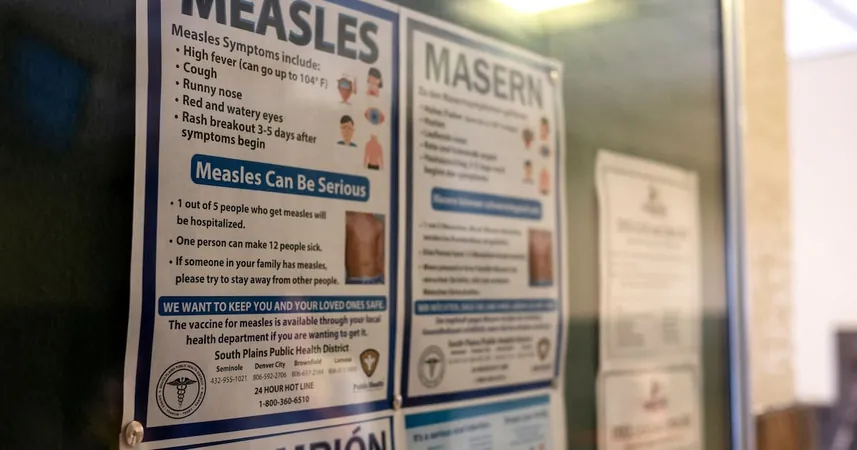
Mice, Movies, and Mind Mapping: The Largest Brain 'Connectome' Revealed!
2025-04-11
Author: Sophie
A Revolutionary Mapping of the Mouse Brain
In an astounding breakthrough, scientists have unveiled the largest brain connectome ever created, detailing a network of cells in just one cubic millimeter of a lab mouse's brain — an area comparable to a grain of sand. This monumental achievement sheds light on the intricacies of mammalian brain architecture.
Unraveling the Brain's Complex Web
Jacob Reimer, a neuroscientist at Baylor College of Medicine and senior author of the study, emphasized that despite the seemingly tiny size of the sample, it houses kilometers of neural connections. Reimer is part of the MICrONS consortium, a collective of over 150 researchers dedicated to advancing our understanding of brain connectivity.
The Innovative Approach
By utilizing a genetically modified mouse whose neurons glowed when activated, researchers analyzed brain activity while the mouse watched iconic movies, including "The Matrix" and "Star Wars: Episode VII – The Force Awakens." This unique method allowed them to map the activity of 76,000 neurons within the occipital lobe, crucial for visual processing.
Crafting the 3D Map of Neurons
The team employed cutting-edge machine learning algorithms, merging anatomical data with glowing cell images to craft a detailed 3D neural map. The final connectome encompassed 200,000 cells and a staggering 523 million synapses — the connections between neurons.
Insights into Brain Functionality
Reimer noted that while this dataset is the largest to date — three times bigger than a part of a human connectome — it remains incomplete. Some neuron cells were missing from the data, and "orphan" extensions emerged, suggesting uncharted connections may exist.
New Discoveries in Neural Behavior
The connectome provided new insights into the behavior of inhibitory neurons, which dampen excitatory neurons. Prior to this research, it was unclear whether these inhibitory neurons targeted specific cells far from their origin, but the findings revealed that they indeed converge on distant targets, underscoring the brain's complexity.
A Boon for Neurological Research
With the dataset now publicly available, this breakthrough heralds a new era for neuroscience, providing a crucial tool for researchers aiming to understand conditions like Alzheimer's and multiple sclerosis. As Reimer noted, this 1mm cube is merely a small segment of the vast visual system of mice. The next goal? Mapping the entire mouse brain.
Challenges Ahead
However, the initiative faces uncertainty as funding has taken a hit, with a $278 million cut from Congress last year. Despite the hurdles, the future of brain research is bright, with the potential for groundbreaking discoveries that could unravel the mysteries of how we think and function.









 Brasil (PT)
Brasil (PT)
 Canada (EN)
Canada (EN)
 Chile (ES)
Chile (ES)
 Česko (CS)
Česko (CS)
 대한민국 (KO)
대한민국 (KO)
 España (ES)
España (ES)
 France (FR)
France (FR)
 Hong Kong (EN)
Hong Kong (EN)
 Italia (IT)
Italia (IT)
 日本 (JA)
日本 (JA)
 Magyarország (HU)
Magyarország (HU)
 Norge (NO)
Norge (NO)
 Polska (PL)
Polska (PL)
 Schweiz (DE)
Schweiz (DE)
 Singapore (EN)
Singapore (EN)
 Sverige (SV)
Sverige (SV)
 Suomi (FI)
Suomi (FI)
 Türkiye (TR)
Türkiye (TR)
 الإمارات العربية المتحدة (AR)
الإمارات العربية المتحدة (AR)